Plant This, Not That – Part Two
More plants commonly found in Florida landscapes that are invasive.
You might be surprised to know that some plants commonly found in Florida landscapes are actually invasive. “Invasive” is a specific term and refers to nonnative plants that cause, or are likely to cause, environmental or economic harm, and/or harm to humans (more on terminology at Ask IFAS).
Many of these plants were brought to Florida as ornamentals, but they can easily spread and outcompete native plants that sustain ecosystem biodiversity. These plants may look beautiful, but they can take over and even damage nearby natural areas. Here are some suggested plant “swaps” you can make to remove invasive plants and replace them with Florida-Friendly alternatives that will not only look great, but they’ll be also better for the environment!
(All of the invasive species identified and categorized on this list are from the UF/IFAS Assessment of Non-Native Plants in Florida’s Natural Areas.)
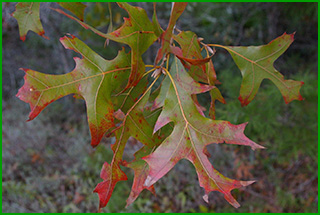
Auburn University, Bugwood.org
Plant This: Turkey oaks (Quercus laevis) — These native trees grow well in dry, sandy areas and average 15 to 30 feet in height. Because of their relative compact size and drought tolerance, they’re worthwhile trees for many home landscapes. Turkey oaks produce an abundant crop of acorns that are perfect for homeowners looking to provide food for wildlife. Plus, they feature bright red foliage in the fall, a classic oak-leaf shape, and highly textured bark that makes them interesting to look at all year-round.

Not That: Camphor tree (Cinnamomum camphora) — This large evergreen tree is invasive throughout Florida and should be removed from the landscape. It produces small fragrant flowers in loose clusters and large amounts of small, shiny, dark blue to black, round fruits. Camphor trees grow fast and can reach up to 60 feet tall. They’re easily identified the smell of camphor that is released when the leaves are crushed. Hand pulling or repeated mowing of saplings can be effective and painting herbicides on the stump after cutting down mature trees is recommended as a control method.
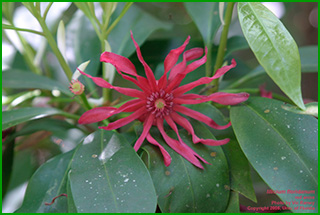
Plant This: Florida anise (Illicium floridanum) — This native shrub works well as a hedge or barrier plant because its dense foliage can create privacy. It can reach heights of 10 to 15 feet with a spread of 6 to 10 feet. When crushed, the leaves exude a strong licorice aroma. In the spring, this plant will produce two-inch, star-shaped maroon flowers, adding a unique pop of color that is perfect for any landscape.

Not That: Privet (Ligustrum sinense) – Formerly known as Chinese privet and not to be confused with Florida privet (Forestiera segregata), this plant was introduced to the U.S. as an ornamental and was often used as a hedge; it can grow up to 16 feet high. It has smooth bark, dark green elliptical leaves, small flowers at the ends of each twig and slate blue fruits that contain one to four seeds. Privet can form dense stands in uplands and wetland areas that can outcompete native plants. It is listed as prohibited by the IFAS Assessment and as a Florida noxious weed; it should be removed from the landscape. Plants can be removed by hand pulling or by digging them up, but if fruit is visible, IFAS recommends pruning off the berries first and then remove the shrub. For larger areas, removal through mowing and herbicide can be effective.
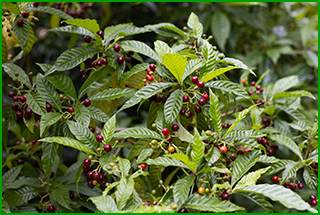
Plant This: Wild coffee (Psychotria nervosa) – With shiny, dark green leaves, this native shrub is an attractive addition to the landscape. Wild coffee can reach 4 to 10 feet tall and spread 4 to 8 feet wide with a dense, rounded growth habit. It does best in well-drained soil and freeze protection. It can be used as a foundation, border, or mass planting. When grown in heavy shade, it can look like a small tree with an open canopy. In spring and summer, wild coffee produces clusters of small white flowers, followed by red fruits into fall, attracting birds and other wildlife. The flowers are one of the nectar sources for the rare Atala butterfly found mainly in southeastern Florida.
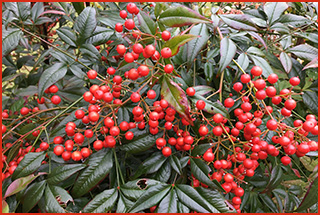
Not That: Heavenly bamboo (Nandina domestica) – Also known as nandina, this invasive plant has a spreading form with bamboo-like stalks and delicate, ferny foliage in shades of green and red. Like many invasive plants, it was introduced for its attractive berries and foliage but spread into natural areas throughout the southeastern U.S. displacing native plant populations. Nandina is difficult to control — even a piece of root left behind can grow into a new plant and the berries are eaten and spread by birds and other animals. If you really want to use nandina in the landscape, look for one of the two approved sterile cultivars that are either berry-free or produce berries that do not germinate.
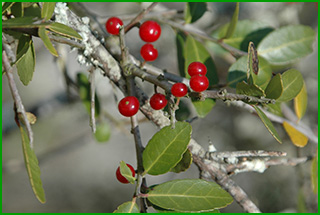
Plant This: Dwarf yaupon holly (Ilex vomitoria dwarf) – This durable and adaptable plant will add wildlife interest and winter color to your landscape. Yaupon holly’s fast growth rate and small leaves make it a perfect choice for screens, hedges, or even as a topiary. Both male and female plants produce small white flowers in spring, which attract pollinators, but only female yaupon holly plants produce berries. These berries can be red, orange, or even yellow, and birds and other wildlife will feed on them throughout winter. Yaupon holly grows well in full or partial sun and tolerates both drought and salt, meaning this plant can find a home in a variety of landscapes.
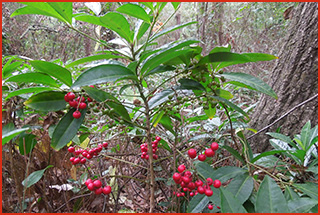
Not That: Coral ardisia (Ardisia crenata) – This prohibited plant was originally brought to Florida to brighten landscapes with its attractive foliage and bright red berries. Coral ardisia produces berries year-round that attract birds and raccoons, which can then spread the plant. Both the berries and leaves can be toxic to pets, humans, and livestock. It is classified as an invasive and if you discover coral ardisia in your landscape, removing it will help prevent its spread. You can try pulling plants by hand, as it may take multiple applications of herbicide to eradicate them.
For more information on how to select Florida-Friendly native plants and avoid invasive species, read “Plant This, Not That: A Guide to Avoiding Invasive Plant Species,” available for purchase at the UF/IFAS Extension Bookstore.
